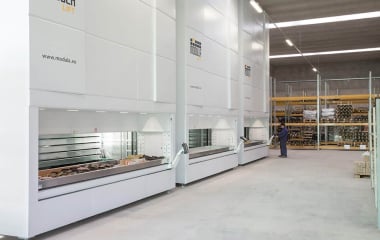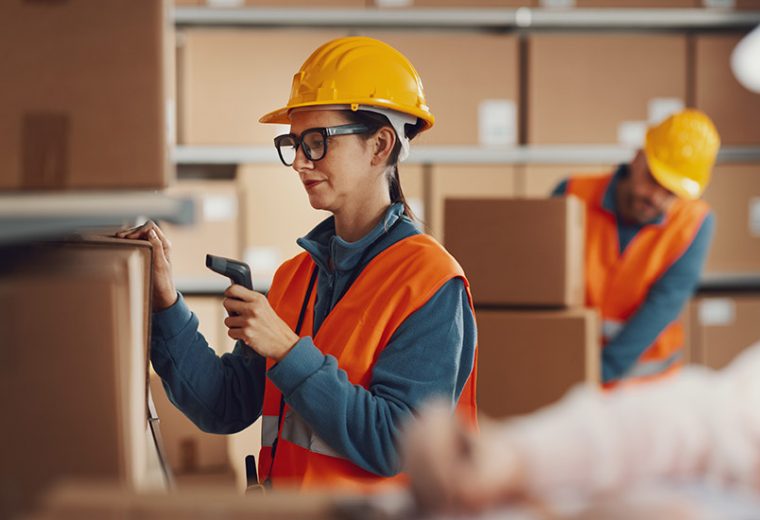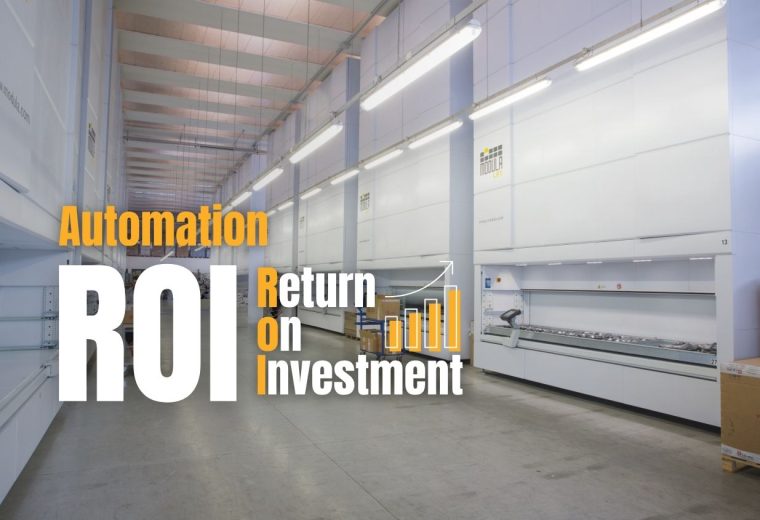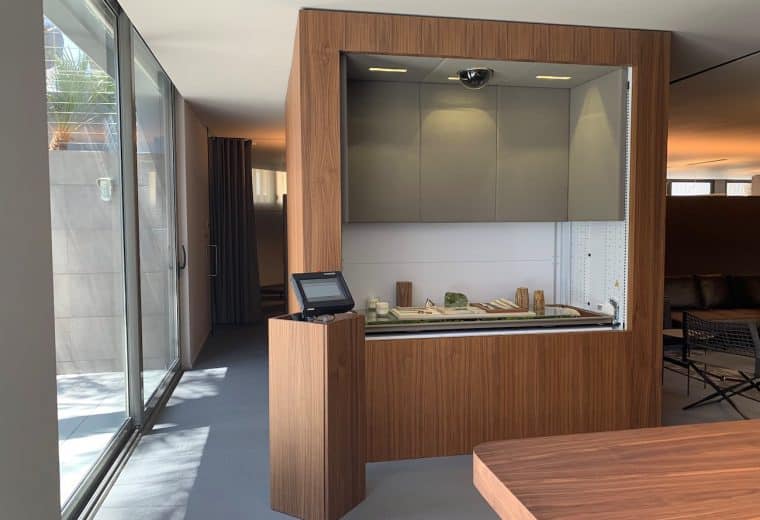Short on space, libraries turn to automated storage solutions
Libraries are running out of space. Traditional storage solutions, including static shelving and book stacks, aren’t an efficient use of valuable floor space. That’s why many libraries have rethought how to use their space and have implemented automated storage and retrieval systems, like the vertical lift module (VLM).
Libraries across the world – from secondary schools to universities and corporations — are adjusting to the needs of the 21st century and becoming multi-functional spaces. This change is accompanied by more rapid acquisition of books and other materials and evolving technology. All of this results in increased pressures on libraries in terms of space, access needs, inventory control, and management.
No longer places that simply loan books, libraries have become full resource centers that must also store digital media, objects, artworks, and photographic collections. They need an efficient way to house this diverse array of materials while remaining flexible and ensuring maximized space utilization.
The problem is that libraries are running out of space. Expanding the buildings themselves is often off the table for cost reasons, leaving libraries struggling to figure out where to put the new materials that continue to flow in their direction.
Traditional storage solutions, including static shelving and book stacks, aren’t an efficient use of valuable floor space. That’s why many libraries have rethought how to use their space and have implemented automated storage and retrieval systems, like the vertical lift module (VLM).
What is a vertical lift module?
VLMs, like those from Modula, are fully automated vertical storage systems that require a minimal footprint by taking advantage of available ceiling height. This maximizes any area’s storage potential. If a library’s structure permits it, a Modula VLM of as much as 46 feet in height can hold library materials safely and securely. When needed, each item can be retrieved with the touch of a user-friendly controller or the scan of the barcode.
This feature eliminates the need to search for items and ensures that the right item is delivered at the optimum ergonomic retrieval height. There are no more climbing ladders to retrieve heavy, bulky books!
What advantages do vertical lift modules provide libraries?
Consolidate space by storing books in vertical lift modules
A VLM saves up to 90% of valuable floor space compared to traditional storage methods. Aisles take a lot of space throughout a library, and shelving is difficult to access and reach. Optimizing your library’s existing storage space will reduce clutter and improve the accessibility of learning materials. Moreover, the recovered floor space can be used to create additional meeting rooms and provide access to computers or reference materials.

Vertical lift modules work well in all types of libraries. Thanks to the flexible integration and scalable design, the storage capacity can be easily adjusted and reconfigured. If needed, units can be readily relocated.
In addition, these vertical storage solutions can extend through a library’s floors and provide multiple level access to the stored items within the unit. The VLMs can be used not only to store all the goods but also conveniently act as an elevator for transporting items between floors.
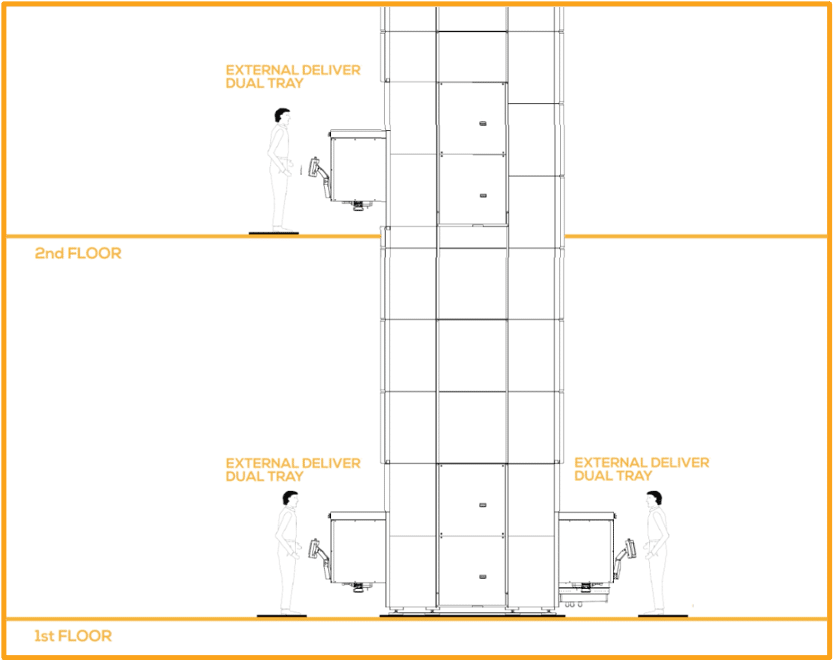
Full traceability and real-time inventory updates with WMS software
All retrievals from the VLM are monitored and documented to offer full traceability. The librarian can immediately track the availability and location of an item, avoiding the classic situation in which a book is listed as available on the online catalog but is nowhere to be found in the stacks. Modula’s VLMs can be integrated into any existing local IT system thanks to our software package called Modula WMS. This inventory management software provides an accurate and continuous exchange of information with minimal impact on pre-existing procedures.
Increased productivity and reduced retrieval time
Modula VLMs are designed to save space and increase efficiency in warehouses and factories. Rather than having workers search for items in shelves across a massive warehouse, the items are delivered to a worker in one location. This same principle applies to libraries. Because the library employees don’t have to walk up and down long aisles of shelving, retrieval times can be reduced up to 70% compared to static shelving systems.
Thanks to the simple inventory management software and the visual picking aids, the library staff can quickly and easily locate and/or return books, making it possible to request items electronically and pick them up within minutes. This eliminates retrieval errors or inaccurate replacement of books and material after returning.

Ergonomic workstations
With a Modula VLM, there’s no more climbing, bending, or reaching for books. Items are automatically delivered to the comfortable working height.
The learning curve to operate the machines is quick. In most cases, an employee can understand how to use one of our VLMs within 15 minutes. The library staff only need to learn how to operate the user-friendly touchscreen that makes picking from the unit very simple and fast.
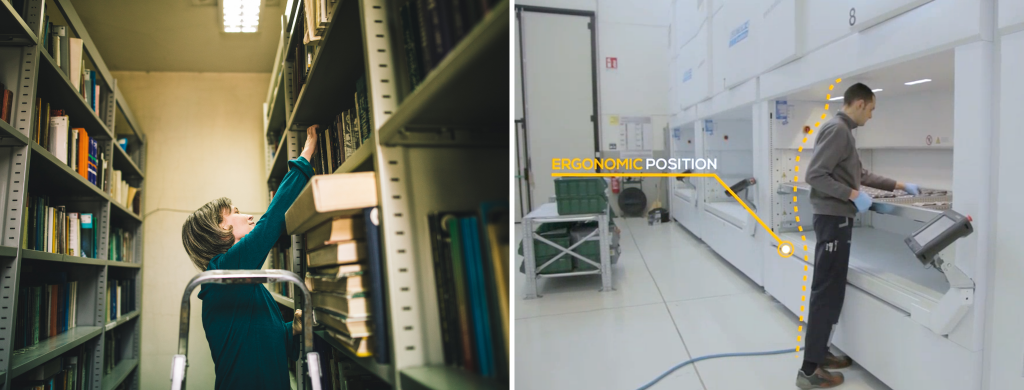
Flexible and efficient material handling
The formats of the material stored in libraries vary extensively and present ergonomic and space claim challenges in terms of storage, access, preservation, and curation. Modula VLMs can store nearly any type of material: books, periodicals, newspapers, manuscripts, films, maps, prints, documents, microforms, CDs, cassettes, videotapes, DVDs, Blu-ray discs, and other formats.
Trays can be organized for items of every type and size. By using partitions and dividers, it is possible to create the exact number of storage locations required in each tray and avoid waste. Configuration settings can be adjusted at any time to accommodate changes in the size or quantity of the stored items. Trays can contain different items, or the same items separated into different years, collections, or quantities
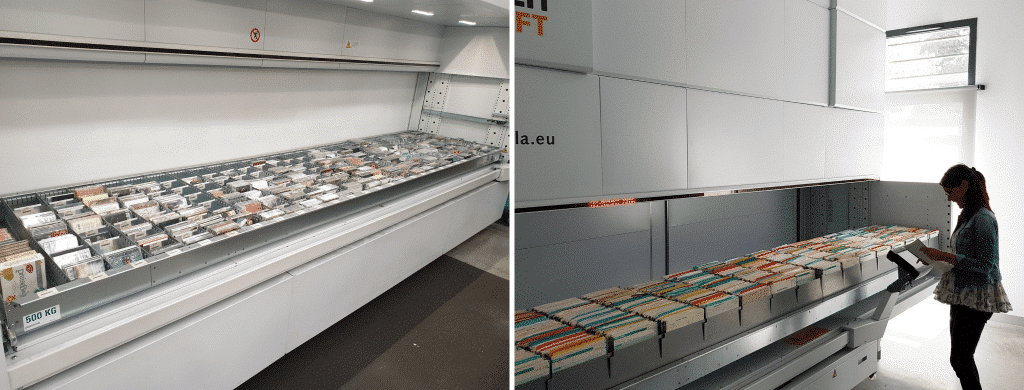
Stock density optimization
Thanks to a height detection system, the height of the materials in the tray is measured as the tray is put away. This allows the densest storage location to be determined in real-time, maximizing the storage density within the unit. More importantly, a VLM eliminates the need to store books based on the traditional library criteria of subject matter or author. The machine does not care about such classifications. As a result, books can be arranged so that those of similar shape are grouped on each shelf, rather than the typical hodgepodge of book heights and widths. This eliminates the waste caused by mixing taller books with shorter books, as is required in a library that adheres to Dewey Decimal System criteria.
Moreover, the software will constantly monitor which items are requested most frequently, making sure that these items will be stored closest to the picking bay so they can be retrieved even faster.
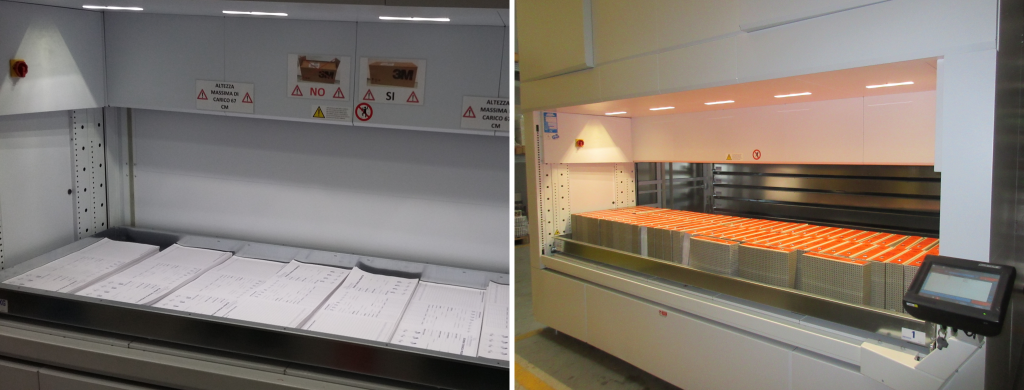
Cost saving by implementing automated storage and retrieval systems in libraries
Automated storage and retrieval system for books eliminate the need and cost of offsite storage facilities. In addition, the return on investment is very quick: anywhere from 6 to 18 months, depending on the overall size of the project.
Secured and clean enviroments to store books
Good storage significantly prolongs the life and usability of books or any other items in a library`s collection. Libraries need to keep their stock in a clean and stable environment, minimizing exposure to all kinds of light and external elements.
Modula VLMs are fully enclosed systems with an automatic door that prevents goods from being damaged. They minimize exposure to environmental elements, including light, heat, and dust. Units can also be equipped for climate-controlled (either temperature or humidity) environments, often a requirement for libraries and archives.
As a result of COVID-19, there’s even more of a need to keep libraries safe and clean to protect both staff and guests. Vertical lift modules provide a technological solution to this safety issue. Materials are stored in a safe, secure environment and automatically delivered to the picking bay. Librarians don`t need to walk around the library and pass by other employees, which makes it easier to adhere to the six-foot minimum distance. By picking directly from the VLMs, fewer people touch the materials. All the library`s inventory is condensed in a smaller footprint, largely reducing the number of high-touch surfaces to clean and disinfect.
Security and inventory control
Expensive books or collections are a vulnerable target for thieves, and libraries need to have preventative measures in place. A reliable locking and validation feature plays a key role in ensuring the security needed.
Every VLM is password-protected, allowing only authorized operators with a personal badge and/or access code entry to operate the machine. As a result, all picking operations are monitored and log-ins are tracked even down to specific trays, depending on the chosen level of security. Such detailed tracking can be beneficial for inventory traceability, preventing library staff from retrieving worn items or allowing the theft of highly valuable items.

By adopting better storage solutions, libraries can implement better organization, have access to their collection in a smaller footprint and make space for new functions and services, without taking away available building space.

